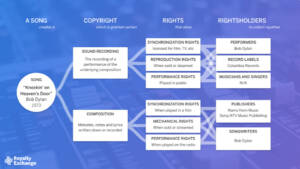Measuring the success of your Tidal promotion campaign

Introduction
Explanation of Tidal promotion campaigns
Tidal promotion campaigns are a way to increase the visibility and reach of your music on the Tidal platform. These campaigns can include a variety of tactics, such as social media advertising, email marketing, playlist placement, and influencer partnerships. The goal of a Tidal promotion campaign is to drive more streams, followers, and engagement to your artist profile on the platform. By strategically targeting your audience and leveraging the unique features of Tidal, you can effectively promote your music and grow your fanbase.
Importance of measuring success
Measuring the success of your Tidal promotion campaign is crucial to determine whether your efforts have been fruitful or not. It helps you understand the effectiveness of your marketing strategies and identify areas that need improvement. Without measuring the success of your campaign, you may continue to invest time and money in ineffective tactics, which can lead to a waste of resources. Measuring success also allows you to set realistic goals and track your progress towards achieving them. By analyzing the data, you can make informed decisions and adjust your approach to ensure that your Tidal promotion campaign is successful. Therefore, it is essential to measure the success of your campaign to optimize your efforts and achieve your desired results.
Defining Success Metrics
Identifying goals and objectives
Before launching a Tidal promotion campaign, it’s essential to identify your goals and objectives. What do you want to achieve through this campaign? Is it to increase the number of followers on your Tidal profile, boost the number of streams for a particular track, or generate more revenue from your music? Once you have identified your goals, you can set specific objectives that will help you achieve them. For instance, if your goal is to increase the number of followers, your objective could be to gain 100 new followers within a month. Identifying your goals and objectives will help you measure the success of your Tidal promotion campaign and make necessary adjustments to achieve your desired results.
Choosing relevant metrics
Choosing relevant metrics is crucial for measuring the success of your Tidal promotion campaign. It is important to identify the key performance indicators (KPIs) that align with your campaign goals. For example, if your goal is to increase the number of Tidal subscribers, then metrics such as the number of new subscribers, conversion rate, and retention rate would be relevant. On the other hand, if your goal is to increase brand awareness, then metrics such as reach, impressions, and engagement rate would be more appropriate. By choosing the right metrics, you can effectively track the progress of your campaign and make data-driven decisions to optimize your results.
Setting benchmarks
Setting benchmarks is an essential step in measuring the success of your Tidal promotion campaign. It involves establishing specific goals and targets that you want to achieve through your campaign. These benchmarks can be based on various metrics, such as the number of new subscribers, the increase in streams, or the growth in social media followers. By setting benchmarks, you can track your progress and determine whether your campaign is meeting your expectations. It also allows you to make adjustments and improvements to your strategy if necessary, ensuring that you achieve the desired results.
Measuring Success
Tracking website traffic
Tracking website traffic is an essential aspect of measuring the success of your Tidal promotion campaign. By monitoring the number of visitors to your website, you can determine the effectiveness of your promotional efforts. You can use tools such as Google Analytics to track website traffic and gain insights into user behavior. This data can help you identify which promotional strategies are working and which ones need improvement. Additionally, tracking website traffic can help you optimize your website for better user experience, which can lead to increased engagement and conversions.
Monitoring social media engagement
Monitoring social media engagement is a crucial aspect of measuring the success of your Tidal promotion campaign. By keeping an eye on the number of likes, shares, comments, and mentions on your social media posts, you can gauge the level of interest and engagement from your target audience. Additionally, monitoring social media engagement can help you identify any potential issues or negative feedback that may arise during your campaign, allowing you to address them promptly and effectively. Tools such as social media analytics can provide valuable insights into your audience’s behavior and preferences, helping you optimize your promotional efforts and achieve your desired results.
Analyzing conversion rates
Analyzing conversion rates is a crucial step in measuring the success of your Tidal promotion campaign. Conversion rates refer to the percentage of people who took the desired action after seeing your promotional content, such as signing up for a free trial or subscribing to Tidal. By analyzing conversion rates, you can determine which promotional tactics were most effective in driving conversions and adjust your strategy accordingly. It’s important to track conversion rates over time to see if they are improving or declining, and to compare them to industry benchmarks to gauge your campaign’s performance. With this information, you can make data-driven decisions to optimize your Tidal promotion campaign and achieve your desired results.
Evaluating customer feedback
Evaluating customer feedback is an essential step in measuring the success of your Tidal promotion campaign. By collecting feedback from your customers, you can gain valuable insights into their experience with your campaign and identify areas for improvement. One effective way to gather feedback is through surveys or polls, which can be distributed via email or social media. You can also monitor social media channels and review sites to see what customers are saying about your campaign. By analyzing this feedback, you can make informed decisions about how to optimize your promotion strategy and improve customer satisfaction.
Interpreting Results
Comparing results to benchmarks
After analyzing the data gathered from your Tidal promotion campaign, it’s important to compare the results to industry benchmarks. This will give you a better understanding of how your campaign performed in comparison to others in your industry. Benchmarks can include metrics such as engagement rates, conversion rates, and overall reach. By comparing your results to these benchmarks, you can identify areas where your campaign excelled and areas where it fell short. This information can then be used to make adjustments and improvements to future campaigns.
Identifying areas for improvement
After analyzing the results of your Tidal promotion campaign, it’s important to identify areas for improvement. This could include targeting a different audience, adjusting the messaging or creative, or changing the timing of the campaign. Look for patterns in the data and feedback from customers to determine where changes can be made. It’s also important to consider external factors, such as market trends or competitor activity, that may have impacted the success of the campaign. By identifying areas for improvement, you can make strategic adjustments to future campaigns and increase the overall effectiveness of your Tidal promotions.
Adjusting strategies for future campaigns
After analyzing the results of your Tidal promotion campaign, it’s important to adjust your strategies for future campaigns. This could include targeting a different audience, using different promotional channels, or adjusting the messaging of your campaign. It’s important to take note of what worked well and what didn’t, and use that information to make informed decisions for your next campaign. Additionally, staying up-to-date with industry trends and changes can help you stay ahead of the curve and ensure the success of your future campaigns. Remember, the key to a successful promotion campaign is to constantly evaluate and adjust your strategies based on the results you see.
Conclusion
Summary of key points
In summary, measuring the success of your Tidal promotion campaign is crucial to understanding the effectiveness of your marketing efforts. By tracking metrics such as streams, followers, and engagement, you can determine which strategies are working and which ones need to be adjusted. It’s important to set clear goals and benchmarks before launching your campaign, and to regularly analyze your data to make informed decisions about future promotions. With the right tools and approach, you can maximize the impact of your Tidal promotion campaign and achieve your desired outcomes.
Importance of ongoing measurement and evaluation
It is crucial to continuously measure and evaluate the success of your Tidal promotion campaign. This ongoing evaluation will help you identify what is working and what is not, allowing you to make necessary adjustments to your strategy. By monitoring metrics such as engagement rates, click-through rates, and conversion rates, you can determine the effectiveness of your campaign and make data-driven decisions to optimize your results. Additionally, ongoing measurement and evaluation can help you stay on track with your goals and ensure that you are achieving the desired outcomes. Without regular evaluation, you risk wasting time and resources on ineffective strategies, hindering the success of your Tidal promotion campaign.








